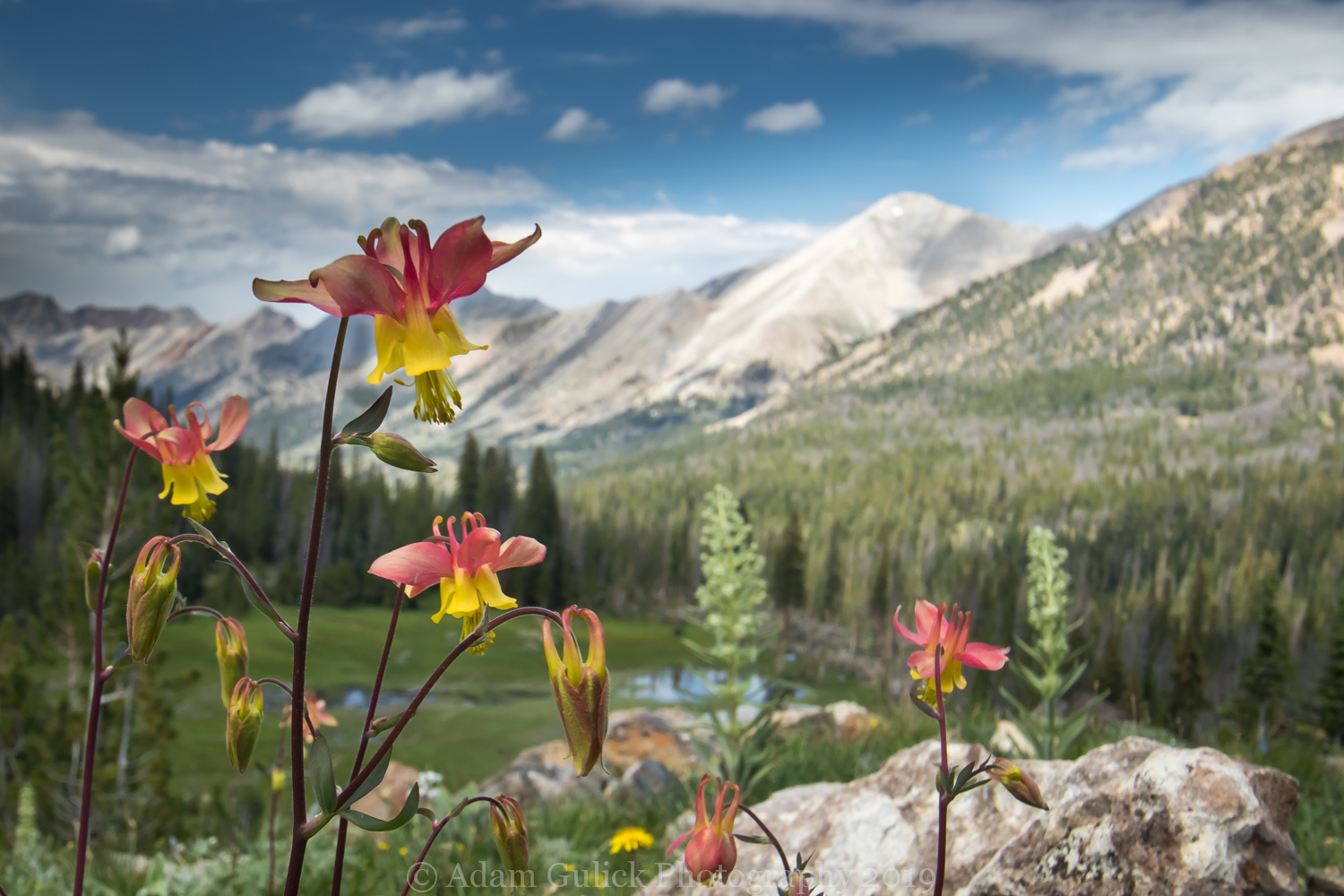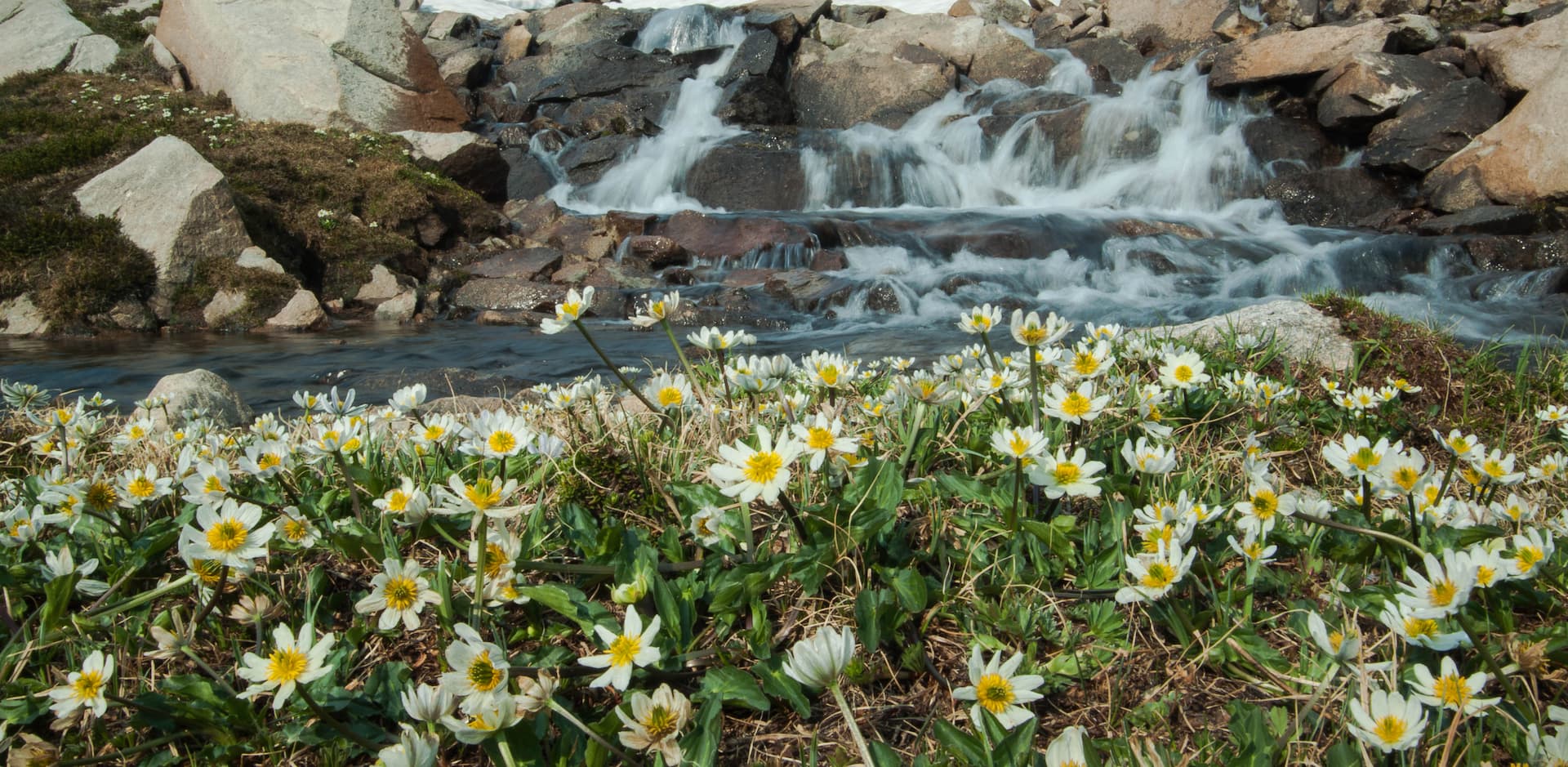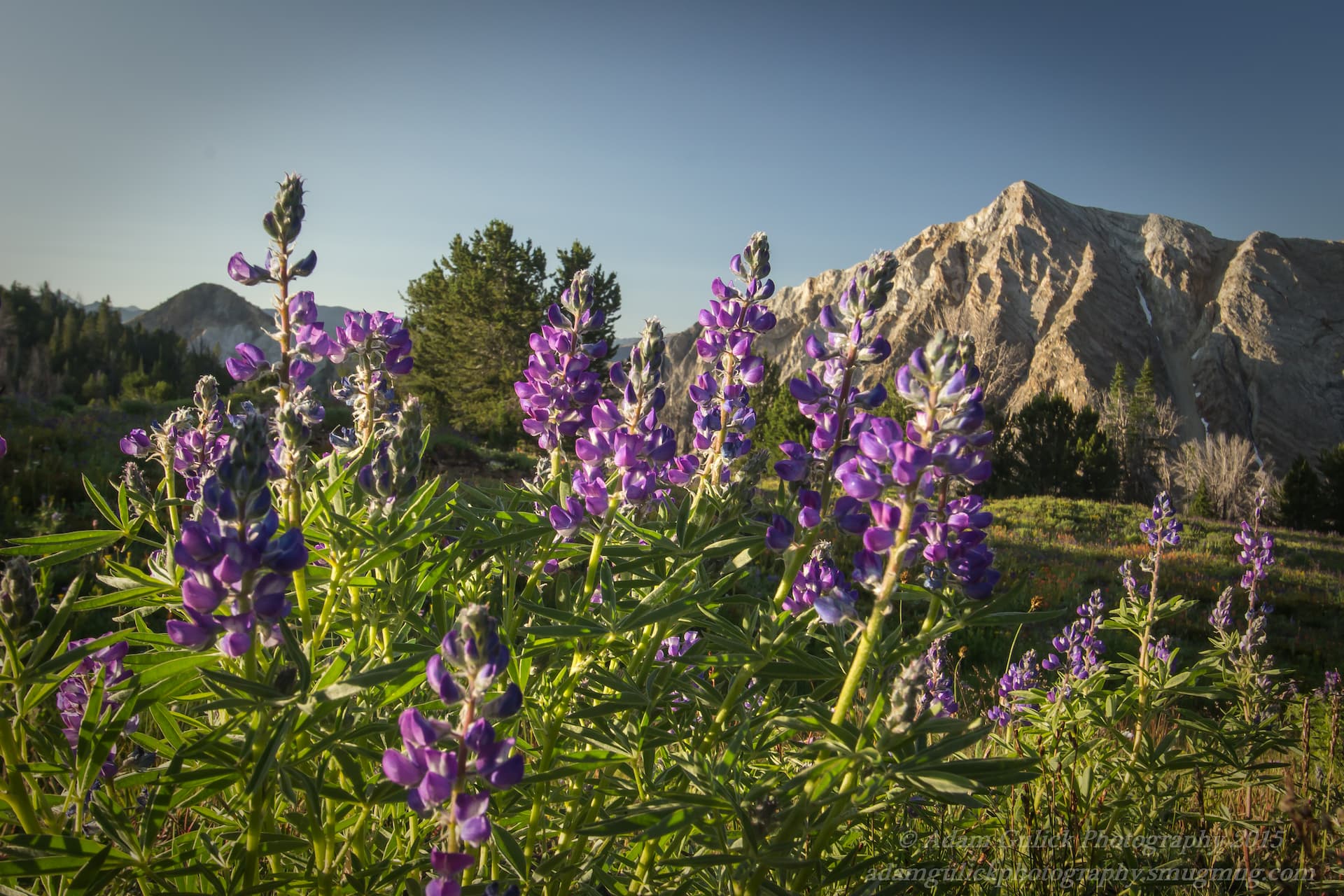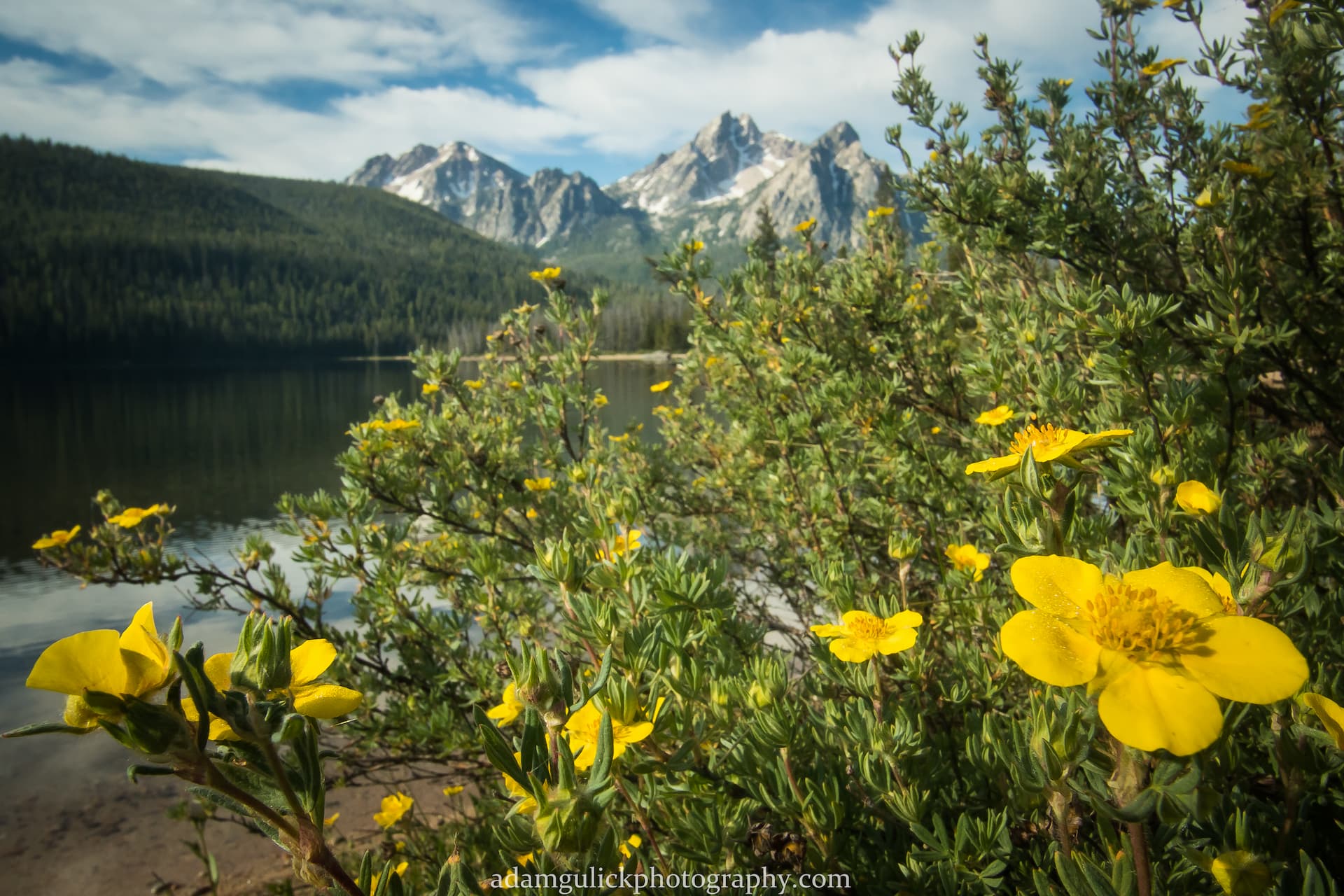
Wildflowers of Stanley: 25 Must Know Species when Visiting Stanley this Summer
Summer in the Idaho mountains! The meadows and mountainsides are painted by the will of nature. From late April until the snow once again buries the flora, these colorful displays can be seen throughout the Sawtooth Valley. There are hundreds of varieties native to the central Idaho Mountains, so listing them all might be a bit overwhelming. To narrow it down a bit, here are 25 species you might expect to see in the Stanley area this summer.

White Mules-ears
(Wyethia helianthoides), emerges from marshy meadows in late spring to early summer. This species is only found in Idaho a few contiguous states. Look for Mules Ears in marshy meadows west of Stanley, particularly at Stanley Lake Creek and the headwaters of Marsh Creek.

Mountain Shooting Star
(Dodecatheon jeffreyi) is one of the early bloomers in the sawtooth valley. It prefers wet marshy meadows late spring-early summer, blooming later at higher elevations and close to water. The meadows around nip tuck road and highway 21 west of town near Blind Summit in the headwaters of marsh creek.

Western Columbine
(Aquilegia formosa), one of my personal favorites, grows anywhere from sun-soaked meadows to shaded forest stream banks, to rocky north slopes. It does require a great deal of moisture. These start blooming late spring, climbing in elevation later into the summer. Look for these along streams on the forest floor basking in dappled light.

Elephants Heads
(Pedicularis groenlandica), get their common name from the blooms uncanny resemblance to elephant heads. Elephants Heads thrive in marshy meadows up to 10,000 feet, blooming late spring to late summer, where ever there is enough moisture. These flowers are louseworts, a family of plants that are root parasites, deriving nutrients from the root of other plants.


Spreading phlox
(Phlox diffusa) Starts blooming mid-spring at lower elevations on rocky south slopes, blooming mid-summer above the treeline along rocky ridgelines. Their color ranges from white, lavender, pink, and purple. The specimen pictured above lives on the Chamberlain Divide in the White Cloud Mountains.

Slim Larkspur
(Delphinium depauperatum), is a fairly common species amongst a few native varieties. Look for these in open meadows, and along streams in open forests. All parts of the plant are poisonous causing neuro-muscular paralysis if ingested, so don't even think about adding it to your salad!

Goldenweed
(Haplopappus sp.) belongs to the Sunflower family and comes in a variety of species. It can grow thick and bushing in sunny draws, or low and carpeting in semi dry alpine meadows.

Marshmarigold, Elkslip
(Caltha leptosepala), thrives primarily in marshy alpine meadows early-mid summer, where it can sometimes grow fully submerged. The best display I've seen was in Big Boulder Basin in the White Clouds Wilderness.

Lance Leaf Stonecrop
(Sedum lanceolatum), is a native succulent that grows from the valley floor to high mountain ridges in dry rocky-sandy substrate. These will begin to emerge on drier south slopes in the spring and rocky ridgelines later in the summer.

Fireweed
(Epilobium angustifolium), derives its name from a tendency to carpet an area after a forest fire. It can also grow densely along open streams. Fireweed is a late bloomer painting blackened forests purple around August. The blooms turn to cotton-like seed that is carried by the wind. These are fairly widespread, but 4th of July Creek can put on quite a show!

Alpine Hulsea
(Hulsea algida), has carved out its own specialized niche in this world. You'll have to go up, up, up to lay eyes on this species as it prefers talus alpine slopes. This one particular was off the west slope of the highest peak in the Sawtooth mountains above 10,000 feet, Thompson Peak.

Alpine Forget Me Not
(Hackeli micrantha), is a high elevation variety similar to small-flowered Forget-me-not, which is also native to Idaho. These striking blue flowers carpet rocky areas above the treeline, taking root in between rocks. You can find these along your mountain summits mid to late summer.

Merten’s Mountain Heather
(Cassiope mertensiana), is closely related to Pink Mountain Heater, often hybridizing, producing color variations. Heather is an evergreen shrub that grows in high mountain sunny meadows where snowpack provides adequate moisture through the summer.

Lupine
(Lupinus sp.), is a widespread perennial of the pea family, but don't eat these peas as they're poisonous!!! It prefers sunny, semi-dry meadows and slopes among sagebrush and balsamroot or in subalpine meadows. Lupine blooms throughout the summer at a variety of elevations, and typically grows low to the ground at higher elevations.

Prairie Smoke
(Geum triflorum), a member of the rose family derives its name from the wispy hairs that emerge from its blooms. Fairly common in moist meadows, it will bloom from spring through summer up to 10,000 feet. These are common in the meadows along Nip Tuck Road.

White Mariposa Lily or Sego Lily
(Calochortus eurycarus), is a late summer bloomer, often speckling a meadow, like stars in the sky. Mariposa is Spanish for butterfly and you can see why the lily is appropriately named. Look for these anywhere on the valley floor or along sunny mountain trails July-August.

Scarlet Gila
(Castilleja miniata), is a sun-loving species that seems to be a favorite among hummingbirds and butterflies who can extract the sweet nectar from this tubular bloom. This summer bloomer can be found on sunny aspects, often along roads. The south face of Fisher Creek has some particularly nice displays around July.

Arrowleaf Balsamroot
(Balsamorhiza sagittata), is an early bloomer, painting sunny south slopes bright yellow throughout the spring into early. Later in the fall when the plants dry up, the leaves can make a lot of ruckuses for hunters attempting to stalk leary game. Look for these throughout the spring on south mountain slopes to the dry river canyons. Basin Butte Road has one of the better displays.

Penstemon
(Penstemon sp) There are a variety of penstemon found in the Stanley area. Each variety has its own niche in the landscape. The above display of Globosus is near Goat Creek west of town in early summer. The below photo is of the Ryddlberg's variety. Look for penstemon just about everywhere.


Common Camas
(Camassia quamash), grows in wet sunny mountain basins and prairies. A member of the asparagus family, the sweet starchy bulbs were a common food source amongst native tribes and early settlers. These can be seen carpeting the meadows around Nip Tuck Road, Bruce Meadows, and meadows along highway 21 in early summer., often alongside Shooting Star and Elephants Heads.

Water-lily
(Nymphaeaceae sp.), is a semi-aquatic plant that emerges from rhizomes in ponds and lakes. The large yellow flowers begin to bloom in July. The seeds produced by the flowers were used as a food source for Native Americans. These are abundant at the outlet of Stanley Lake, Capehorn Lakes, and other relatively shallow, calm ponds and lakes.

Shrubby cinquefoil
(Dasiphora fruticosa), is a shrub variety of perennial cinquefoil. Certain varieties are commonly used in landscapes as decorative shrubs. Shrubby cinquefoil grows best in water-retentive soil near streams and lakes, as seen above along the shore of Stanley Lake. It blooms throughout the majority of summer.

Paintbrush
(castilleja sp.), comes in a variety of reds, yellows, purples, and whites. Paintbrush thrives on sunny slopes in the spring and moist meadows through the summer. The bright colors of Paintbrush are displayed on the leaves toward the top of the stalk, which surrounds a delicate bloom. Paintbrush is common throughout the Stanley area and much of the West. The above photo is of Scarlett Paintbrush from Ants Basin in late July.

Showy Daisy (or Fleabane)
(Erigeron speciosus), is a common wildflower, belonging to the aster family, throughout the mountain regions of Idaho. It is common along trails growing in bunches in valley bottoms and mid-elevation forest edges. The show Daisy is a mid-summer bloomer.

Idaho Bluebell
(Mertensia sp.) It took a bit of digging to find a photo, but I had to include a flower with our home state in its name! There are a few varieties native to the state, but the Idaho Bluebell grows exclusively in central Idaho. Bluebells belong to the Borage family and bloom throughout the spring, dying back in the summer heat. These are somewhat abundant in the Wood River Valley.
Wildflower season is right around the corner! Expect the color to begin mid-May peaking through June and July at higher elevations. Hopefully this brief guide assists in identifying a few of Stanley's local wildflower species. Summer comes and goes pretty quickly around here, so don't miss out! Plan your stay today! And don't forget your camera!
Photography and blog by Adam Gulick